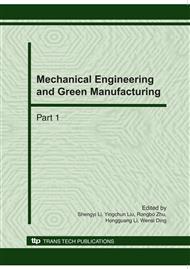p.1425
p.1431
p.1436
p.1441
p.1445
p.1449
p.1453
p.1457
p.1462
Experimental Study on Early Anti-Cracking Properties of Polyvinyl Alcohol Fiber Reinforced Cementitious Composites
Abstract:
This paper mainly studies early anti-cracking of cementitious composites containing polyvinyl alcohol (PVA) fiber and fly ash (FA). The PVA fibers were added at the volume fractions of 0%, 0.25%, 0.5%, 1.0% and 2.0%. The percentages of FA used in the experiment were 0% and 15%. Experimental results show that the maximum crack width and total crack area can be reduced with the increase of volume fraction of PVA fiber, and that no crack appeared at the volume fraction of 2.0%. The reducing tendency of crack width and total crack area kept constant with addition of FA, but reducing amplitude decreased. When the PVA fiber volume fraction remains constant, the early anti-cracking properties of cementitious composites containing PVA fiber and common cement are superior to one containing PVA fiber and FA. Conclusions can be drawn that the early anti-cracking properties of cementitious composites can be improved by PVA fiber.
Info:
Periodical:
Pages:
1445-1448
Citation:
Online since:
October 2010
Authors:
Price:
Сopyright:
© 2010 Trans Tech Publications Ltd. All Rights Reserved
Share:
Citation:


